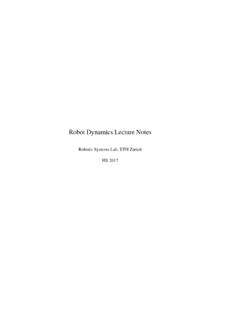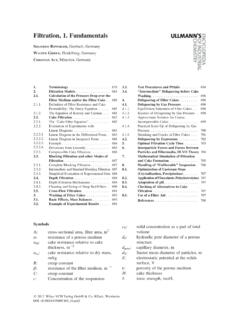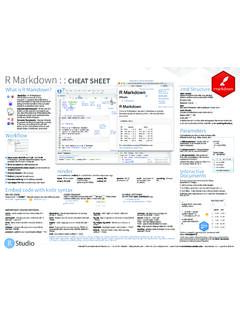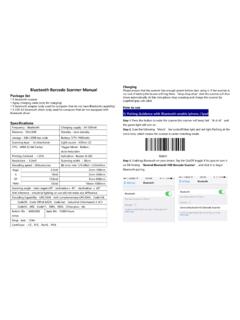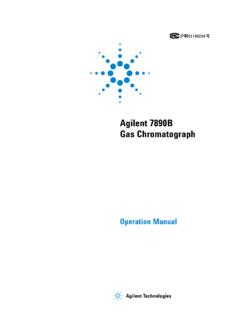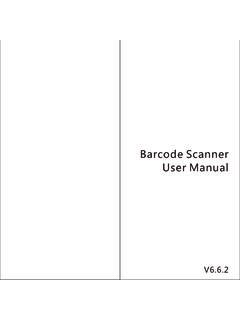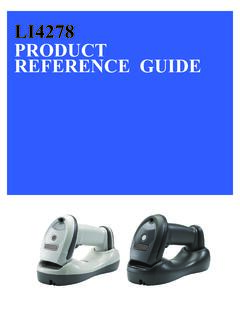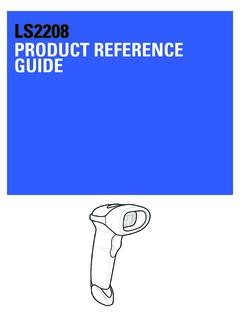Transcription of Applications of drones in warehouse operations
1 Whitepaper Applications of drones in warehouse operations 0 Whitepaper Applications of drones in warehouse operations Lukas Wawrla Omid Maghazei Prof. Dr. Torbj rn Netland Chair of Production and operations Management Department of Management, Technology and Economics ETH Zurich August 2019 Please cite this document as follows: Wawrla, L.; Maghazei, O.; Netland, T. (2019) Applications of drones in warehouse operations . Whitepaper. ETH Zurich, D-MTEC, Chair of Production and operations Management. Downloaded from Whitepaper Applications of drones in warehouse operations 1 Summary drones have shown high potentials in the logistics industry. It has been speculated that this market will grow by $29 billion by 2027 with an annual growth rate of almost 20% [1].
2 drones have particularly found Applications in warehousing operations [2]. Recent technological advances of drones such as visual based navigation and sensors [3] enable indoor Applications of drones . In addition to the advancement of drone technology, a main reason is that the scale of warehouses is increasing due to the growth of global e-commerce. For instance, drones can be used for automated inventory checks [4] and intralogistics. Using drones for such Applications can help warehouse managers to remove tedious and dangerous tasks. This white paper reports 12 identified use cases of indoor drone Applications in warehouses. We classify three different application areas: inventory management, indoor intra-logistics and inspection & surveillance.
3 The analysis indicates that using drones for inventory management Applications have the highest potential in warehouses. Indoor intra-logistics is not yet entirely feasible due to current technological limitations in power supply and payload. drones can potentially also be used for inspection and surveillance, but there is not much public evidence on this application area yet. Whitepaper Applications of drones in warehouse operations 2 Content SUMMARY .. 1 INDOOR DRONE Applications .. 3 drones IN warehouse operations .. 4 INVENTORY MANAGEMENT .. 5 INTRA-LOGISTICS .. 5 INSPECTION & SURVEILLANCE .. 6 USE CASES .. 7 DISCUSSION .. 8 HIGHEST POTENTIAL USE CASE .. 8 STATE OF DRONE TECHNOLOGY .. 9 FAVORABLE warehouse CHARACTERISTICS.
4 10 OUTLOOK .. 11 12 Whitepaper Applications of drones in warehouse operations 3 Indoor Drone Applications Benefits: Indoor Applications have less boundary conditions compared to outdoor Applications . Main benefits of indoor Applications are the following: Less hazardous tasks - No ladder climbing and dangerous inspections anymore Stable weather conditions - Constant weather conditions (no wind, snow rain or fog) Less restrictive regulations - Much easier to get approval compared with outdoors Attractive investment costs - Fast return on investment due to manageable acquisition costs of hardware (small drones ) Technological challenges: Problems such as violating airspace, collisions with birds and manned aircrafts, and flying in hazardous areas such as airports are not inhibitive factors for indoors.
5 However, there are several technological challenges of indoor Applications of drones : Limited hovering area - Many obstacles which increase complexity Integration - Time consuming integration of drones into existing processes Navigation - GPS-denied environment Safety - Potential drone failures & explosions (battery) Ethical challenges: The ethical challenges are mostly concerned with privacy and data protection, but there is also concerns about noise and the feeling of safety risks. Privacy issues - Data collection and preprocessing rules Concerns of Unions - Some labor unions are increasing pressure on regulatory bodies Insurance - Key-question: Who is guilty in case of crash?
6 Whitepaper Applications of drones in warehouse operations 4 drones in warehouse operations The use of drones in warehouses has been increasing over the past years. Large warehouses are aiming to increase efficiency by investing more in automation and robotics. This is not without precedence since the cost of warehousing operations account for 30% of the total costs in logistics [5]. Furthermore, difficulty to attract skilled labors, increasing demand for customer services and the rise of e-commerce have intensified the need to further increase efficiency in warehouse operations . The fourth industrial revolution is also affecting warehouses. They become more digital and more connected as in warehouse .
7 New scanning technologies, bar codes, QR codes, radio frequency identification (RFID) technologies and artificial intelligence (AI) enable drone-driven automations in warehouses. Moreover, onboard computing power and efficient algorithms allow for the implementation of scalable drone Applications [6]. However, the structure of warehouses are diverse with different complexities, which impose constraints for the rollout of a drone program. They differ in terms of geographic location, type of stored items, layout ( shelf, pallets, and boxes), size and technology. The function of warehouses is also diverse. For example, a distribution warehouses is operating differently from cross-docking warehouse and factory warehouses for raw materials and finished goods.
8 drones have started to play a central role in the automation of current warehouses. They are popular due to their ability of drones to fly and hover autonomously, avoid obstacles in different warehouse layouts, navigate indoor, land precisely and potentially operate in fleets. The three most promising areas of indoor drone use cases in warehouses are inventory management, intra-logistics of items, as well as inspection and surveillance. Whitepaper Applications of drones in warehouse operations 5 Inventory Management In the area of inventory management, drones can be used for the following tasks: inventory audit, inventory management, cycle counting, item search, buffer stock maintenance, and stock taking.
9 Stock taking is the physical verification of the quantity of items stored in warehouses. Stock taking is often done annually or by the end of the fiscal year. Whereas cycle counting describes the process of counting a partial amount of a warehouse s inventory on a more frequent basis [7]. This task is usually performed daily or weekly by a small trained team of inventory control staffs. They walk or drive to a designated location in the warehouse , scan the barcode of the item, count the units and move on to the next location following their schedule. Even though this method increases the inventory accuracy compared to the annual one-time inventory checks, there are still several downsides.
10 Among others, cycle counting is slow (manual task), labor-intensive (several inventory staffs are needed), dangerous (risky operations due to working in high altitudes), expensive (labor costs) and error-prone (highly repetitive tasks). drones can add value to optimize this process [8]. The main objectives of using drones for inventory management are to increase the inventory accuracy, decrease labor costs, and minimize dangerous tasks for the workforce. Intra-Logistics drones can also be used for intralogistics. For instance, they can transport parts from warehouses to workshops in factories. The ability of drones to follow pre-defined flight paths and carry items show good potential for indoors such as on-site express delivery of tools and spare parts as well as lubricants.


